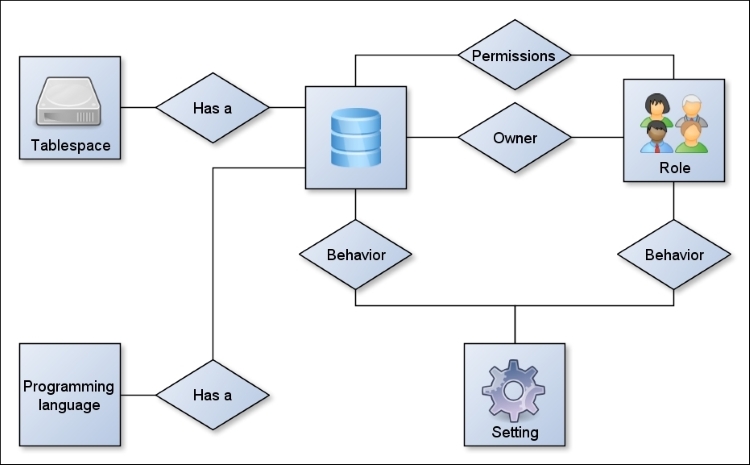PostgreSQL high-level object interaction
To sum up, a PostgreSQL server can contain many databases, programming languages, roles, and tablespaces. Each database has an owner and a default tablespace; a role can be granted permission to access or can own several databases. The settings can be used to control the behavior of the PostgreSQL server on several levels, such as database and session. Finally, a database can use several programming languages:

PostgreSQL main components conceptual relations
In order to create a database, one needs to specify the owner and the encoding of the database; if the encoding of template1 does not match the required encoding, template0 should be used explicitly.
For the car web high level objects interaction portal database, let us assume that the database owner is the car_portal_role role, and encoding is UTF8. In order to create this database, one can execute the following commands:
CREATE ROLE car_portal_role LOGIN; CREATE DATABASE car_portal ENCODING 'UTF...



























































